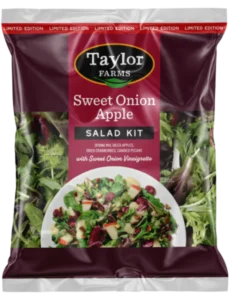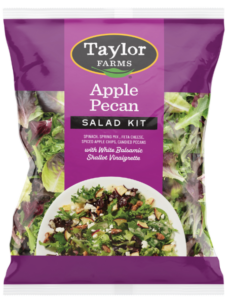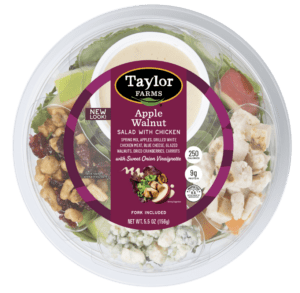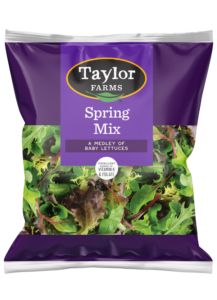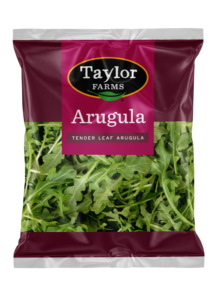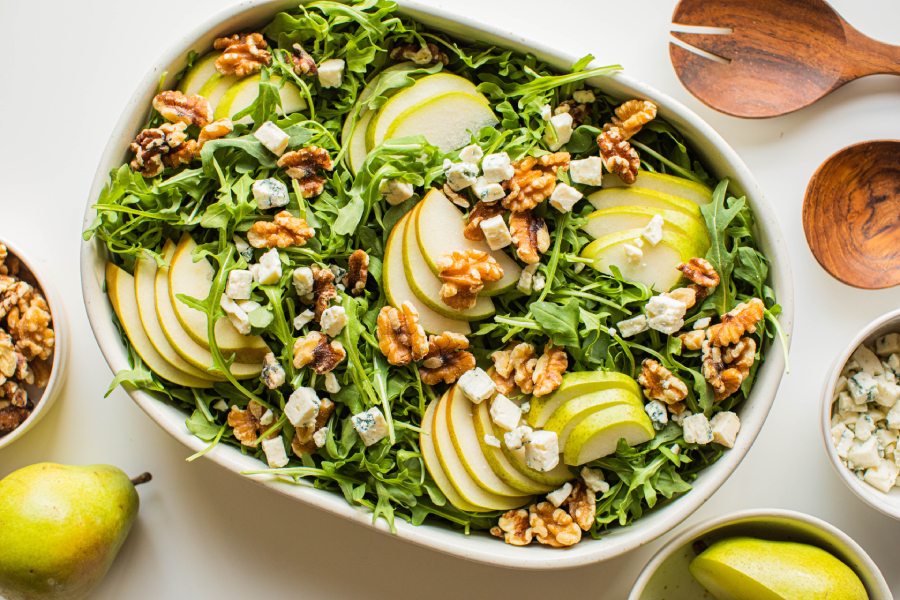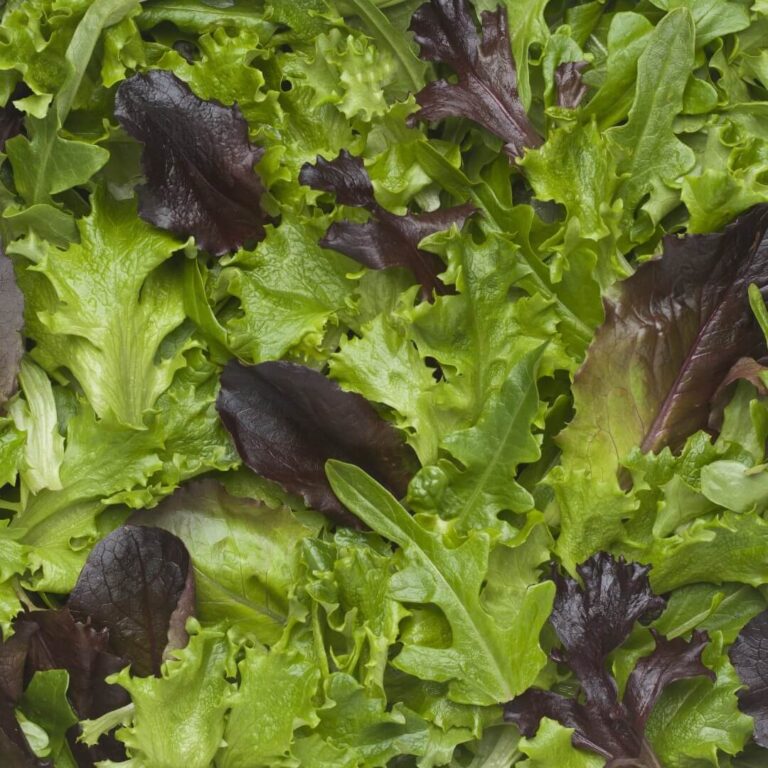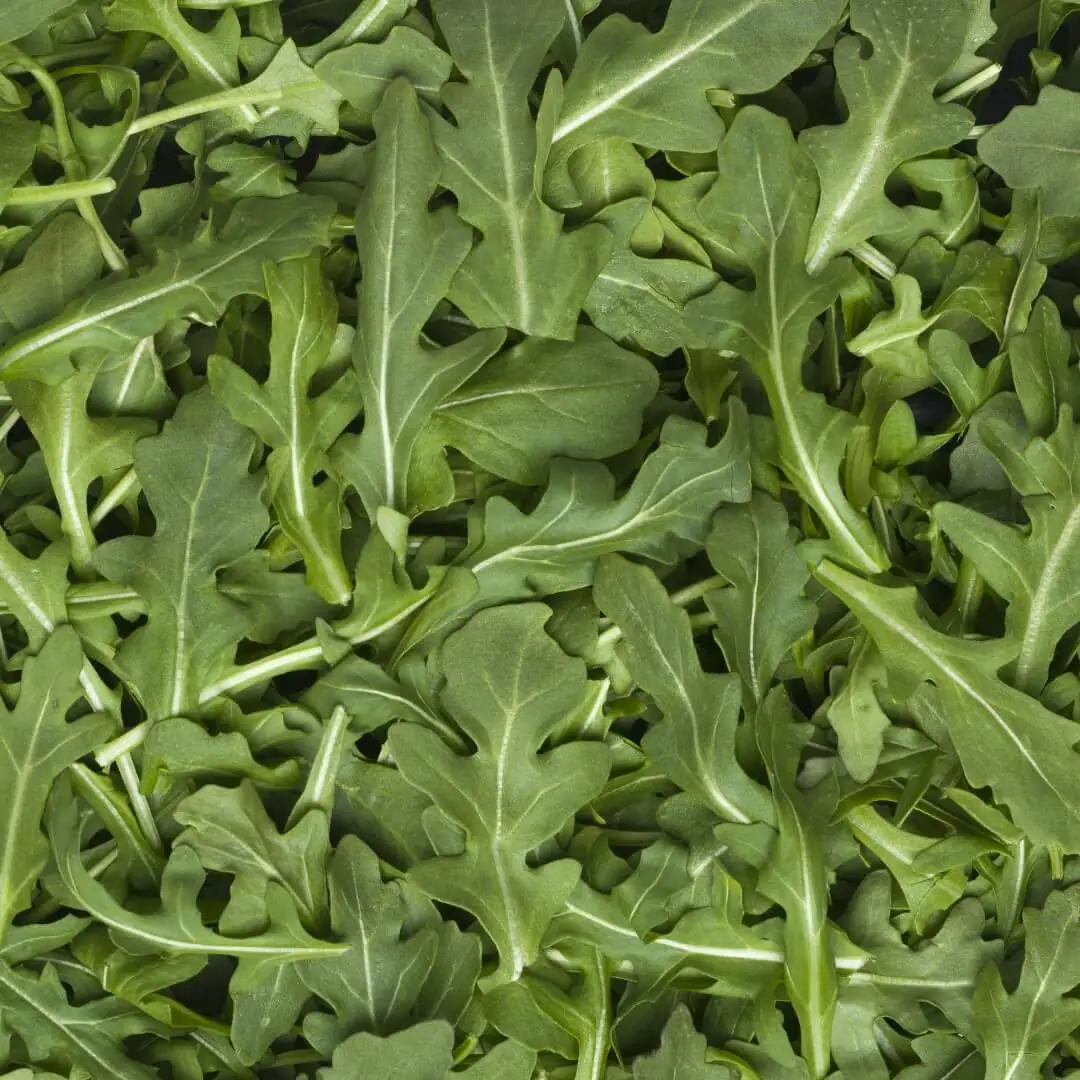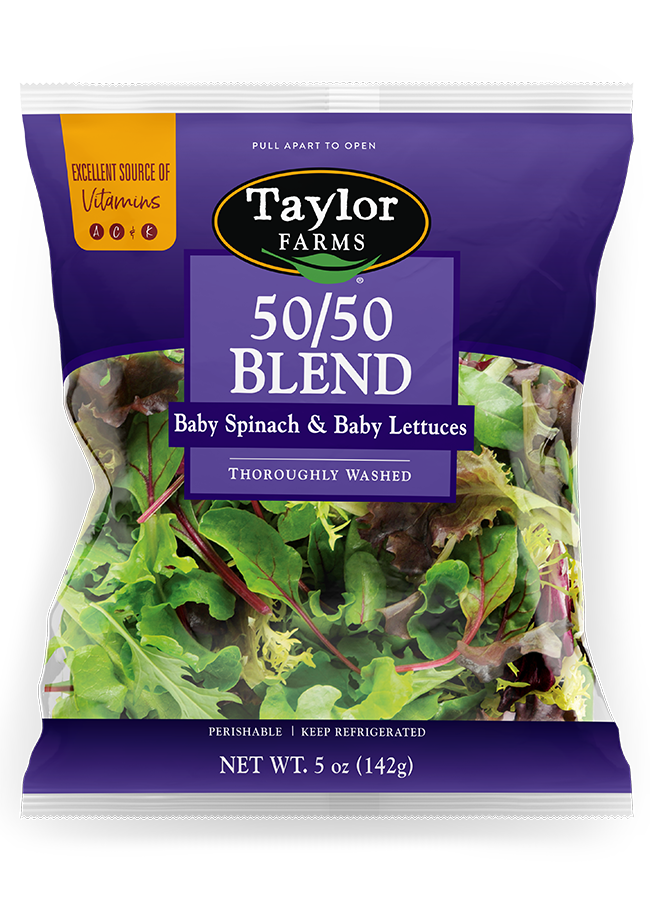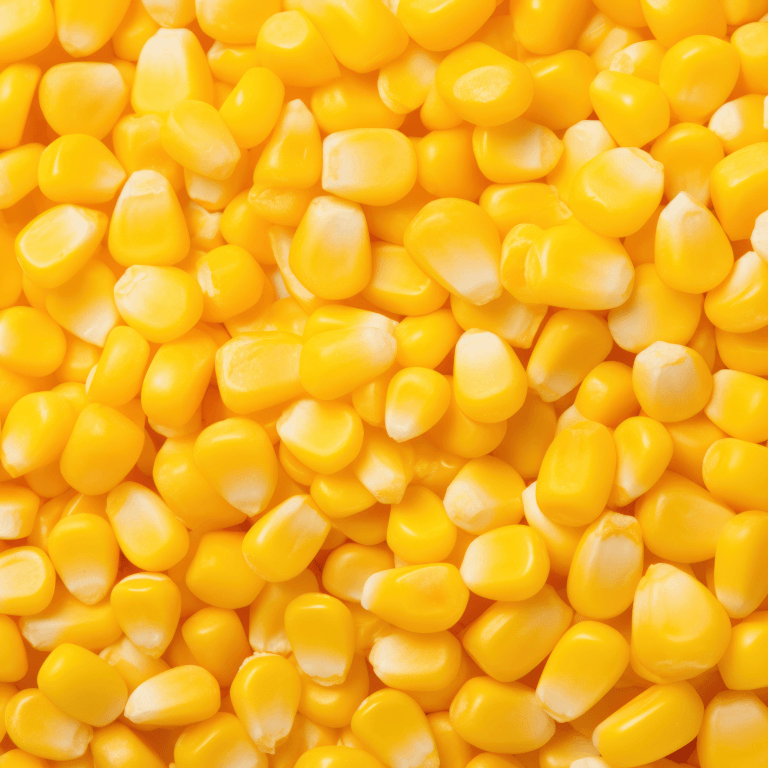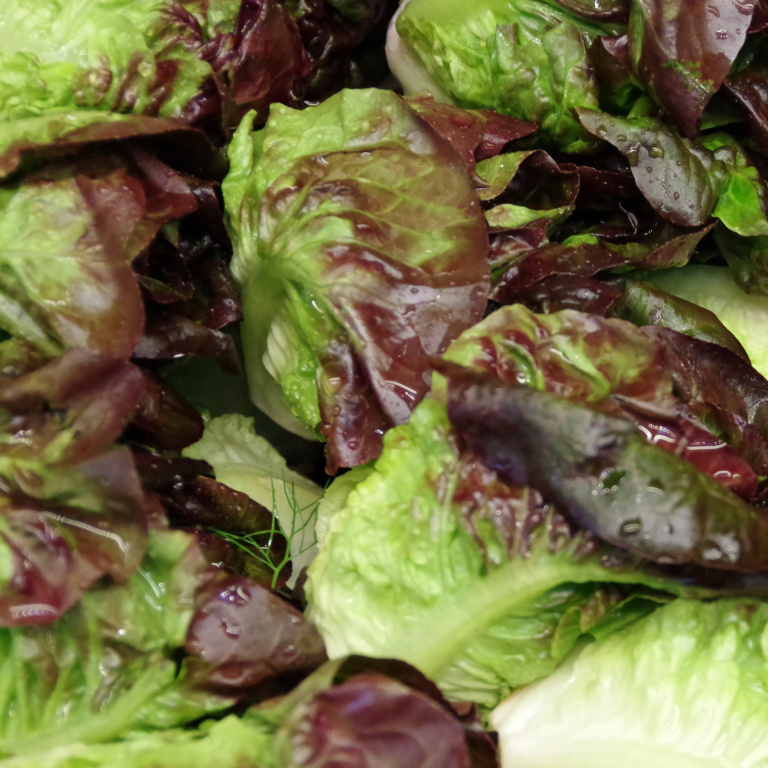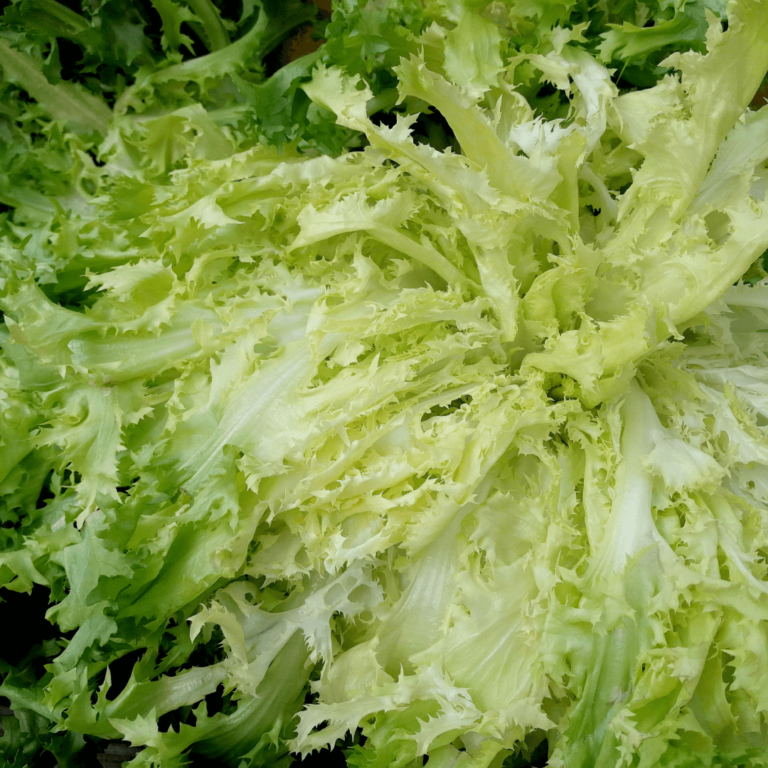Arugula at a Glance
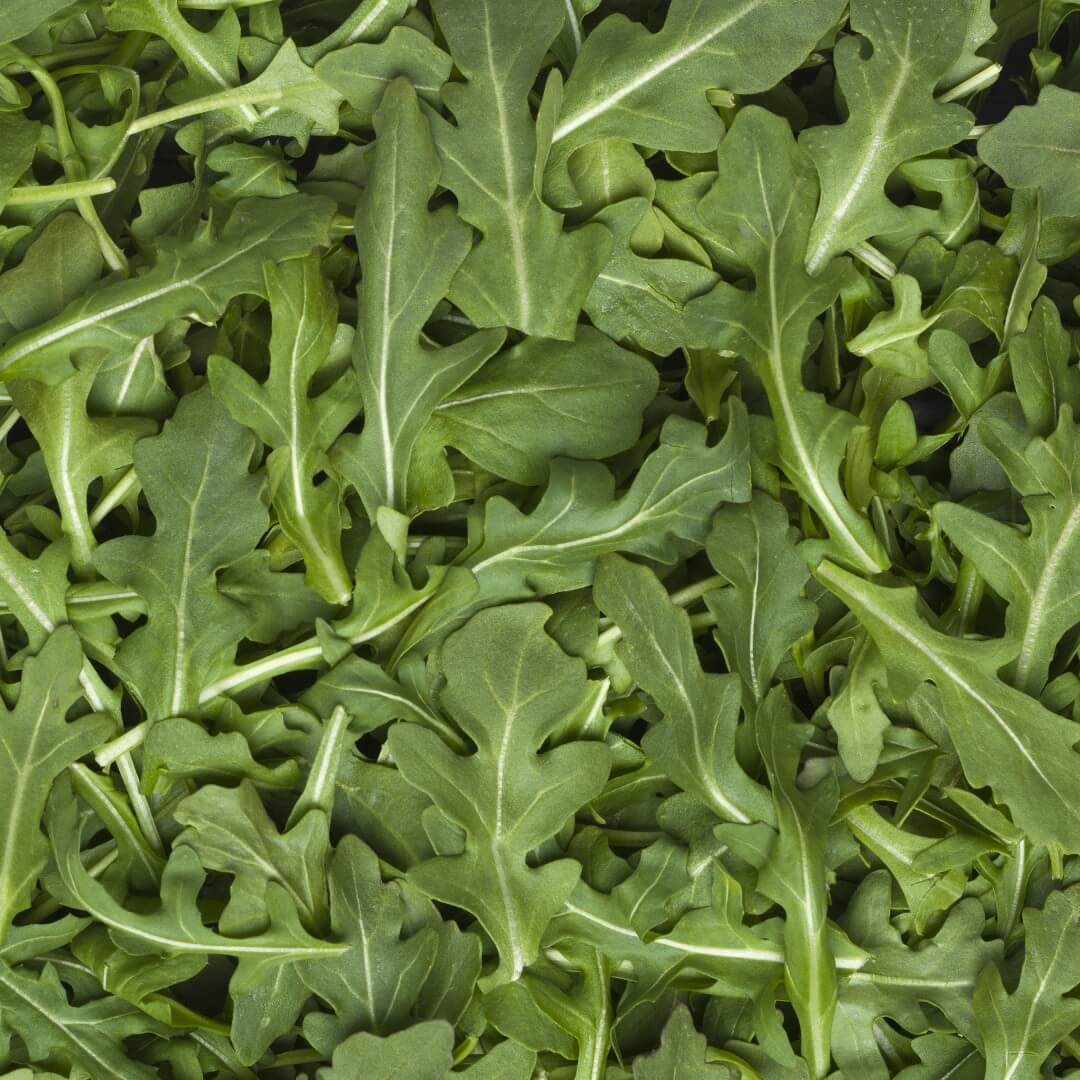
Scientific Name: Eruca sativa
Family: Brassicaceae
In Season: Generally available during the spring and fall seasons, although it can be cultivated year-round in mild climates or with the use of protective covers.
Varieties: Common varieties include standard arugula (also known as wild rocket), which has a peppery and slightly bitter flavor, and cultivated varieties such as baby arugula or wild arugula, which tend to have milder flavors and more tender leaves.
Great for: Salads, wraps, sandwiches, pizzas, pastas, and incorporated into sides. Arugula pairs well with a range of ingredients, such as citrus fruits, nuts, cheeses, and vinaigrettes.
Arugula Nutrition
Vitamins A, C & K
Packed with Antioxidants
Promote Detoxification
Common Questions about Arugula
Raw arugula’s flavor profile is distinctly robust, with an initial subtly sweet note that quickly transitions into more of a peppery punch. The intensity of this flavor depends on the maturity of the leaf, with younger leaves offering a more mild taste and mature leaves offering a stronger taste. The raw crunch is refreshing, providing a perfect counterbalance to the spicy kick—making arugula an excellent choice for salads or garnishes in need of an exciting flavor twist.
When exposed to heat, arugula transforms in flavor. Its peppery punch mellows down a bit, giving way to a more nutty flavor that integrates into many kinds of dishes. Its slight bitterness mellows out as well, and the texture softens, providing a nice contrast in cooked dishes. From stir-fries to pastas or soups, arugula’s cooked character can offer subtle complexity to your dishes. Keep in mind that it does wilt quickly, so it’s often best to add at the end of cooking to maintain its integrity.
Growing arugula
When growing arugula at home, remember that it grows quickly, and leaves can usually be picked as early as 4 weeks after planting. For baby arugula, pick when the leaves are small, about 2-3 inches long. For a more peppery flavor, wait until the leaves reach 4-6 inches in length. Try to pick arugula in the morning when it’s cooler to retain freshness and cut the leaves at the stem.
Purchased arugula
When purchasing fresh arugula, look for leaves that are vibrant and firm, with a rich green color. Avoid bunches with yellowing or wilting leaves, or those with visible signs of damage or spoilage such as spots or sliminess. Fresh arugula should smell mildly peppery and look crisp. It’s ready to eat as soon as you bring it home, though it can be stored in the refrigerator in a loose plastic bag for up to a few days for maximum freshness.
Place the arugula in a loose plastic bag. If possible, use a perforated bag or poke a few small holes in a regular bag to allow for airflow. To control humidity and absorb any excess moisture, add a dry paper towel in the bag with the arugula. This helps to prevent the leaves from becoming slimy and prolongs their freshness. Store your bagged arugula in the vegetable crisper drawer of your refrigerator. It typically keeps well for about a week, but peak freshness is within the first few days of purchase.
Arugula can technically be frozen, but it’s important to note that the process will significantly change its texture and alter its flavor somewhat Plus, after freezing, arugula will lose its crispness and become wilted, making it unsuitable for salads or other dishes where a fresh, crunchy texture is desired.
However, frozen arugula can still be used in cooked dishes like soups, stews, sauces, or stir-fries, where the change in texture isn’t as noticeable. Frozen arugula should ideally be used within 6-8 months for the best quality. For best results, blanche and dry the arugula prior to freezing.
Arugula originated in the Mediterranean region, but it is highly adaptable and can be grown in a wide variety of climates and locations, including in parts of North America, Europe, and Asia. It grows best in well-drained soil and cooler weather, typically in the spring or fall, but can also tolerate heat and even frost.
Did you know there’s wild arugula? In the wild, arugula can be found growing along the coasts of southern Europe and western Asia and in parts of North Africa. The wild variety tends to have a more potent, peppery flavor compared to the cultivated version, so keep that in mind in case you find yourself foraging wild arugula during a vacation to Italy.

How to cook & serve arugula
While many have probably only had arugula in salads or wraps, it’s a little more versatile than you may realize.
Sautéed: Quickly sautéing arugula in olive oil with garlic and a dash of salt brings out a mellow, nutty flavor. This makes a delectable side dish or can be tossed with pasta and topped with parmesan.
Wilted: Adding arugula to hot dishes at the last moment will wilt it slightly, tempering its peppery bite. Try adding it to your pizzas, omelets, or paninis.
Stir-fried: Arugula can be stir-fried with other veggies, adding a unique flavor to your Asian-inspired dishes.
In soups: Add arugula to soups towards the end of cooking so it can wilt and infuse the broth with its rich flavor.
Grilled: Believe it or not, arugula can be lightly grilled! Toss it in some oil, lay it on a hot grill for a brief moment, and you have a smoky twist to your salad (or any other dish).
Arugula’s unique taste allows it to pair well with citrus fruits in salads, providing a nice balance to the tangy flavor. For a classic Italian experience, serve it with sliced prosciutto and chunks of Parmesan. Arugula also makes a wonderful bed for grilled fish or chicken.

